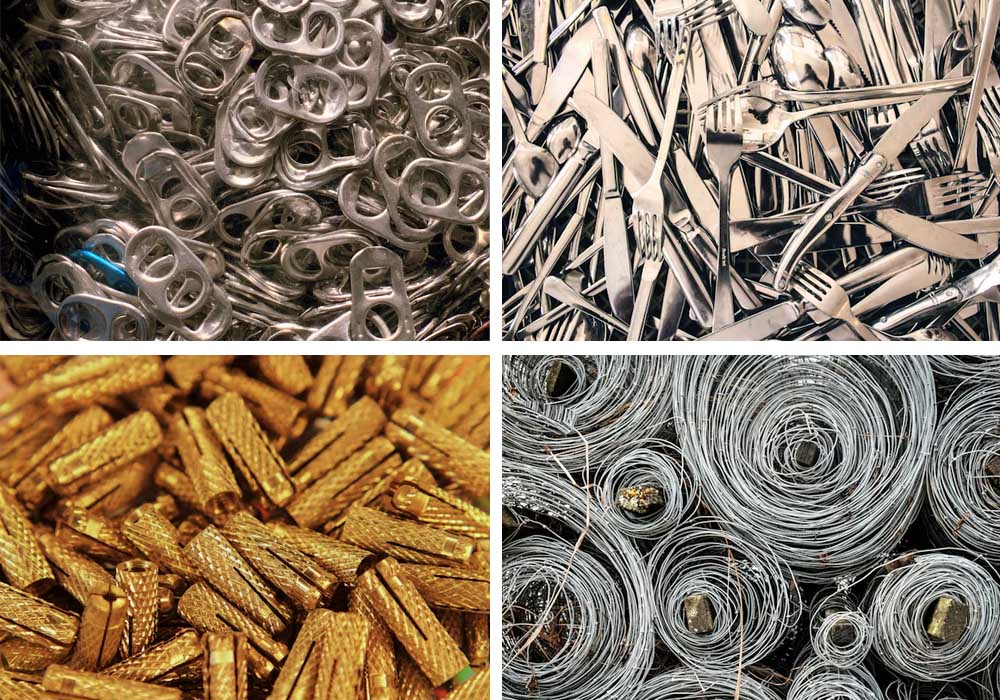Copper Sorting Machine
Aluminum Sorting Machine
Iron Sorting Machine
Stainless Steel Sorting Machine
Zinc Sorting Machine
Brass Sorting Machine
Lead Sorting Machine
Magnesium Sorting Machine
Mixed Metal Sorting Machine
Non-ferrous Metal Sorting Machine
Ferrous Metal Sorting Machine
What is Metal Sorting
Metal sorting is an advanced industrial process that separates different types of metals based on their physical and chemical properties. This technology plays a crucial role in recycling and waste management, ensuring that metals are efficiently sorted for reuse in various industries. With the increasing demand for sustainable practices, metal sorting has become an essential step in minimizing environmental impact and maximizing resource efficiency.
Modern metal sorting systems utilize cutting-edge technology to identify and separate metals with high precision. These systems are designed to handle a wide range of metals, including copper, aluminum, iron, and stainless steel, among others. The ability to accurately sort metals not only improves recycling rates but also enhances the quality of recycled materials, making them suitable for high-value applications in manufacturing and construction.

How Metal Sorting Works
1 Material Feeding
Metal scraps enter through vibratory feeders or conveyor systems, precisely aligned for optimal sensor exposure and processing speeds up to 10 tons/hour.
2 Multi-Technology Scanning
CCD cameras, NIR sensors, and optional X-ray systems analyze spectral fingerprints at 4,000 scans/second, detecting alloy composition and surface characteristics.
3 Real-Time Analysis
Advanced algorithms process material signatures within 5 milliseconds, distinguishing between metal types with 99.7% accuracy using spectral fingerprint databases.
4 Intelligent Separation
Targeted metals are precisely ejected by 200m/s air jets or mechanical arms, achieving 98% purity in sorted output streams for maximum recycling value.
Metal sorting machines utilize a combination of high-resolution CCD optical sensors, near-infrared (NIR) technology, and sometimes X-ray transmission to analyze each metal piece as it passes through the system. These sensors capture detailed spectral information, detecting subtle differences in material composition and surface characteristics. When a target metal type is identified, the machine triggers a high-speed air ejection system or mechanical diverter to separate it from other materials.
The sorting process begins with feeding metal scraps into the machine, where they are properly presented to the sensors. Advanced analysis algorithms process the material signatures in real-time, distinguishing between different metal alloys with remarkable accuracy. This ensures precise separation according to material specifications, significantly improving the purity of recovered metals and enhancing their value in secondary markets.
Core Features and Advantages of Metal Sorting
Metal sorting systems offer unparalleled precision in identifying and separating metals, including ferrous, non-ferrous, and rare-earth metals. They can detect minute differences in composition, which manual sorting cannot achieve. This results in higher purity levels of sorted materials, increasing their market value and usability in manufacturing processes.
Automated metal sorting also significantly reduces labor costs and operational time compared to traditional methods. With the ability to process large volumes of materials continuously, these systems enhance productivity while contributing to environmental conservation by maximizing metal recovery rates.
Technical Specifications of Metal Sorting Systems
Metal sorting machines are equipped with high-resolution sensors capable of detecting metals at a granular level. Typical systems operate at processing speeds ranging from 1 to 10 tons per hour, depending on the model and configuration. The accuracy rate often exceeds 95%, thanks to AI-driven algorithms that continuously improve sorting performance.
These machines are designed to handle various forms of metal waste, including shredded scrap, wire, and mixed alloys. Many models feature modular designs, allowing customization for specific industrial needs. Energy-efficient components ensure sustainable operation, aligning with global environmental standards.
Applications of Metal Sorting
Metal sorting is extensively used in scrap yards, electronic waste recycling, and automotive industries. It helps recover valuable materials like copper, aluminum, and steel for reuse, reducing reliance on virgin resources. Additionally, the mining sector benefits from metal sorting by improving ore grade and minimizing waste during extraction.
Another growing application is in urban mining, where discarded electronics and appliances are processed to extract precious metals. This not only supports circular economy initiatives but also addresses the increasing demand for rare metals in technology manufacturing.
Buying Guide
When selecting a metal sorting system, consider factors such as throughput capacity, detection accuracy, and adaptability to different metal types. It's essential to choose a machine that aligns with your specific operational requirements, whether for high-volume industrial use or specialized recycling tasks.
Look for manufacturers with a proven track record in the industry and robust after-sales support. Advanced features like real-time monitoring, AI optimization, and low maintenance requirements should also be prioritized to ensure long-term efficiency and cost savings.
Maintenance Guide
Regular maintenance is crucial to keep metal sorting systems running at peak performance. Scheduled inspections of sensors, conveyors, and ejection mechanisms help prevent unexpected downtime. Cleaning optical components and calibrating detection systems ensure consistent accuracy over time.
Operators should follow the manufacturer's guidelines for lubrication, part replacements, and software updates. Training staff on basic troubleshooting can minimize disruptions and extend the lifespan of the equipment. Preventive maintenance not only enhances productivity but also safeguards your investment.